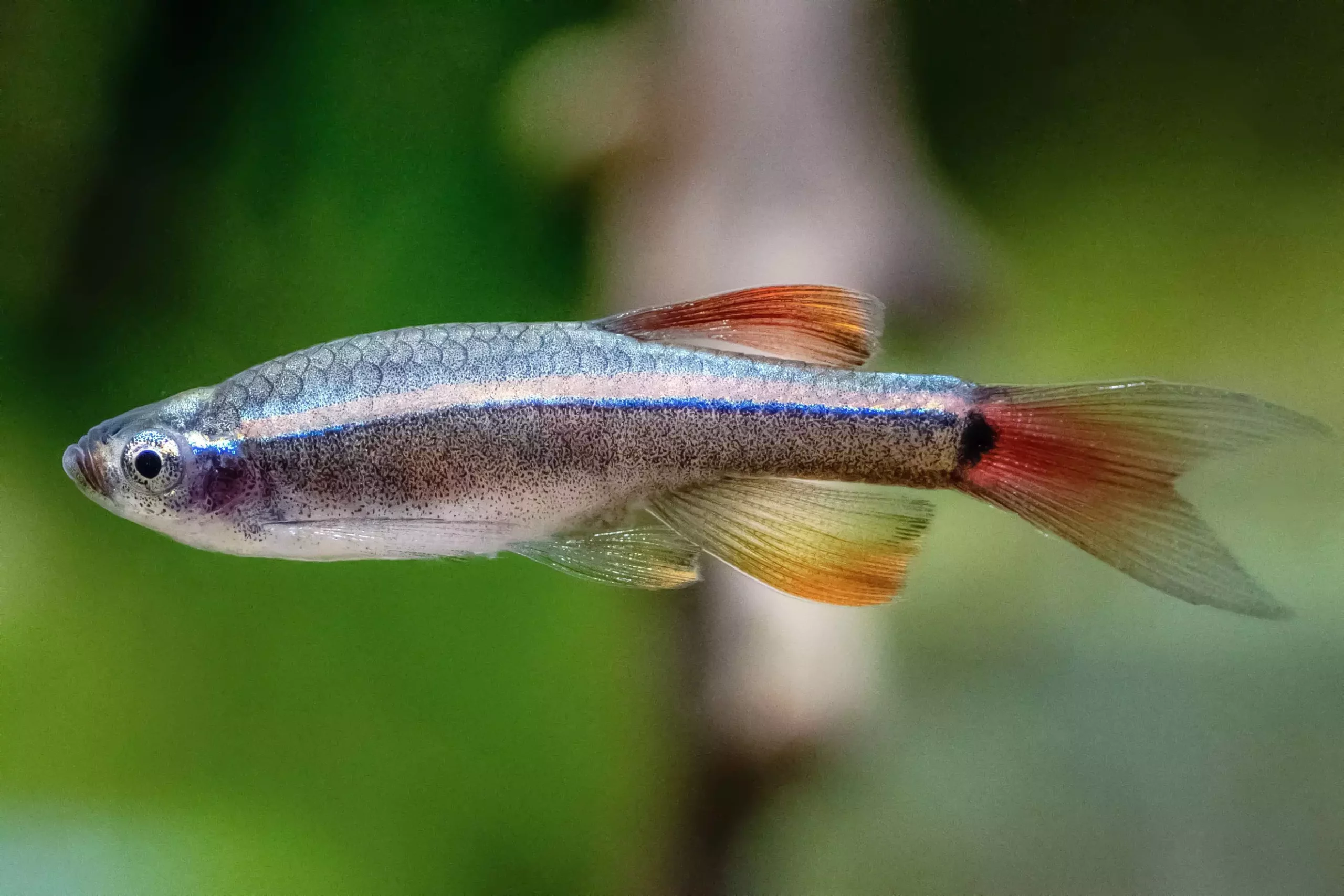White Cloud Mountain Minnows, scientifically termed Tanichthys albonubes, have captivated aquarists for decades, earning the popular nickname “the working man’s neon”. Their vibrant colors closely resemble those of the more expensive neon tetras, yet they are more affordable and accessible to hobbyists. These small fish, usually reaching only 1.5 inches (4 cm) in length, radiate a delightful bronze-brown hue adorned with a shimmering fluorescent line, making them a visual delight in any aquarium. Additionally, the introduction of two new species—Tanichthys micagemmae and Tanichthys thacbaensis—has broadened the options available to enthusiasts since their recognition in 2001. However, availability in the aquarium trade primarily centers around the Vietnamese white cloud, Tanichthys micagemmae.
Despite their popularity in aquarium settings, the wild populations of White Cloud Mountain Minnows have faced significant threats over the years. Their native habitats in China and Vietnam have undergone extensive environmental changes, resulting in a dramatic decline in their numbers. By 1980, sightings of Tanichthys albonubes in the wild had become scarce, giving rise to fears of extinction. Fortunately, isolated populations managed to survive in certain coastal regions of Guangdong and Hainan Island in China, as well as in Quảng Ninh province in Vietnam. Nevertheless, the species remains classified as endangered in China, prompting conservation efforts aimed at reintroducing captive-bred individuals into their natural habitats.
Aquarium Care and Ideal Conditions
For potential aquarists, White Cloud Mountain Minnows present an inviting option, particularly for beginners. These fish thrive in groups, ideally in schools of six or more. When kept alone, they often become withdrawn, losing their vivid coloration and becoming prone to stress. Their peaceful nature means they can coexist with other small, calm fish, although care should be taken to avoid larger or aggressive species that might view them as a meal.
Temperature plays a crucial role in the health of these minnows. They flourish in cooler water, yet prolonged exposure to temperatures above 72 degrees Fahrenheit (22 degrees Celsius) can lead to a shortened lifespan. Therefore, maintaining a stable and appropriate environment is necessary for their well-being. The substrate should be dark and fine, with ample vegetation and hiding spots to provide cover and comfort. Open swimming areas should also be included to accommodate their active swimming style.
When it comes to diet, White Cloud Mountain Minnows are not particularly picky. In their natural habitats, they thrive as voracious insect eaters, relishing mosquito larvae, daphnia, and brine shrimp. In captivity, a well-rounded diet including high-quality flakes, frozen food, and live feeds is recommended to ensure optimal health and vibrancy. This diverse diet not only aids in maintaining color but also supports the minnows’ active lifestyles.
Breeding these charming minnows is relatively straightforward, making them suitable for first-time breeders. When prepared for breeding, males become fiercely competitive, displaying vibrant colors and spreading their fins to attract females. During this time, the breeding pair will scatter eggs throughout the tank, often going unnoticed, as they tend to provide minimal parental care.
Two primary approaches can be employed to facilitate breeding: maintaining a large school of white clouds in a shared aquarium, or setting up a smaller dedicated breeding tank. If opting for a breeding tank, it should ideally contain 5 to 10 gallons of soft water, with a gentle filtration system in place. Spawning should commence in conditions with a pH of 6.5 to 7.5 and temperatures kept between 68 to 72 degrees Fahrenheit. Eager breeders should also provide conditioning with live or high-quality frozen food prior to spawning, ensuring the best success rates.
Although they can tolerate cooler waters, White Cloud Mountain Minnows are unsuitable for outdoor ponds in colder climates where freezing occurs during winters. In their native regions, they have sometimes been used to control mosquito breeding, showcasing their role in local ecosystems. However, as an endangered species, their preservation relies heavily on responsible captive breeding practices and environmental awareness.
As aquarists, it is important to recognize the responsibility that comes with the care of these beautiful fish. Understanding their origins and the environmental challenges they face highlights the need for sustainable practices in aquaculture. By maintaining their needs and supporting conservation efforts, fish enthusiasts can contribute to the survival of these enchanting minnows while enjoying their vibrant presence in aquariums around the world.
Whether as a cherished pet or vital part of a local ecosystem, the White Cloud Mountain Minnow, with its colorful appearance and resilient spirit, continues to be a valued species that deserves both admiration and protection.

